Institute for Excellence in Writing (IEW) sent me their complete Phonetic Zoo Spelling Level B Starter Set to review as part of The Old Schoolhouse Review Crew. Have you heard about IEW? I have been reviewing their awesome spelling program for over a month now and it is a perfect fit for Alyssa. Phonetic Zoo was designed by Andrew Pudewa and James B. Webster. This spelling program is based on the premise that auditory input ensures the correct spelling is absorbed in the brain one letter at a time.
This phonics-based self-teaching spelling program is suitable for children ages 9 and up in grades 3 or higher. They have three levels (A, B, and C). Be sure to give your child the spelling placement test to determine which level is best for your child. You may want to give more than one placement test over several days to determine the level needed. A starter set should be purchased in the beginning, because it contains EVERYTHING you need to teach spelling.
- 5 Audio CD's
- MP3 Audio Downloads
- Phonetic Zoo Teacher's Notes (Downloadable E-Book Format with PDF Files)
- Large Lesson Flash Cards (ALL Words and Jingles for ALL Levels)
- Personal Spelling Cards (Track Misspellings Across All Subjects)
- Small Zoo Cards
- Spelling and the Brain Video Seminar (Streaming Video Link Provided in Teacher Notes E-Book)
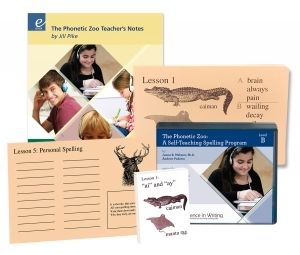
Audio CD's
The Audio CD's are enclosed in a hard case. There are 5 discs. Each disc contains 10 lessons with the corresponding audio tracks for corrections. The last disc includes only 7 lessons and the Final Exam audio. A card stock insert was placed at the front of the CD case providing the purchaser with directions on how to access the MP3 audio downloads and the Phonetic Zoo Teacher's Notes E-book.
Phonetic Zoo Teacher's Notes
The Phonetic Zoo Teacher's Notes E-book provides instructions on how to access your linked video resource, Spelling and the Brain, followed by the Table of Contents. It begins with an Introduction to the Phonetic Zoo program and how it teaches spelling. The book also explains How to Use the Program with step-by-step details. Furthermore, it includes a Brief History of the Blended Sound-Sight Program as a resource for you.
The Phonetic Zoo Spelling Level B program consists of 47 incrementally taught lessons which are also found in the Teacher's Notes E-book. It may take you 1 to 15 days to complete ONE lesson. Lesson are underlined and numbered in bold print at the top of the page. The lessons are NOT cumulative; they are organized by categorized spelling rules. Therefore, you can start on any rule you desire and can relate it to your reading lessons or book studies. Teacher tips are scattered throughout the lesson pages. The Rule or Jingle, Discussion Points, and Word Lists titles are bolded for organizational purposes. A personal spelling list is included every fifth lesson in addition to the last lesson. This is a wonderful way to integrate spelling into other subjects. Throughout the week, Alyssa and I would jot down incorrectly spelled words from other subjects.
A longer final exam is offered at the end of the leveled program which will indicate whether your child progresses to the next level or not. It is divided into two days or parts. Depending on the level, 25(A) - 35(B) words are given for each part. Level C contains 70 words which are given on one day. The book includes the dialog for the audio which is found on the CD. Audio MP3's 1-86 cover the core lessons and MP3's 87-92 cover the final exam.
There are also several Appendices which provide you with helpful teaching resources. A Student Spelling Test Sheet is included as Appendix 1 which will be useful if you choose not to purchase a college-ruled spiral notebook. Appendix 2 consists of the Placement Test Guides and Appendix 3 discusses the Six Syllable Types which serve as helpful reminders for the educator. Included in the Teacher's Notes E-book is a list of commonly misspelled categorized words found on the Personal Spelling Lesson Alternatives Appendix 4 page which is based on various rules such as ng, ch/tch, months of the year, days and holidays, tricky -ing and -ed, etc. Appendix 5 lists 240 Commonly Misspelled Words. Appendix 6 explains the Phonetic Zoo Set-up and offers you printable templates to create your own. Finally, Appendix 7 contains directions for a Spelling Poster or Folder with Printouts.
Lesson Cards
These 8 1/2" by 5 1/2" manila colored sturdy card stock cards contain all three levels of words on each card. Animal images with their names written next to them will be on the front left side of the card. The right side of the card will consist of three leveled sets of words. Three words are given for each level. Educators use the words for their particular level purchased during lessons. For example, I focused on the words in Level B for Lesson 2 which were grieve, deceive, and neither in our discussion. The back of the cards contain the complete word lists for each of the 3 levels on the right-hand side with the rule or jingle on the left-hand side. Personal Spelling Lesson Cards are included to write down individualized words.
Spelling Zoo Cards
The glossy spelling zoo cards are 3 1/2" tall by 2 1/2" wide. The lesson number and rule with images are found on the front side. The jingle or chant (hint) will be seen on the back of the card. These cards can be used as motivational student rewards to display on the wall for practice or as part of the child's personal Phonetic Zoo.
The Phonetic Zoo Teacher's Notes E-book provides instructions on how to access your linked video resource, Spelling and the Brain, followed by the Table of Contents. It begins with an Introduction to the Phonetic Zoo program and how it teaches spelling. The book also explains How to Use the Program with step-by-step details. Furthermore, it includes a Brief History of the Blended Sound-Sight Program as a resource for you.
There are also several Appendices which provide you with helpful teaching resources. A Student Spelling Test Sheet is included as Appendix 1 which will be useful if you choose not to purchase a college-ruled spiral notebook. Appendix 2 consists of the Placement Test Guides and Appendix 3 discusses the Six Syllable Types which serve as helpful reminders for the educator. Included in the Teacher's Notes E-book is a list of commonly misspelled categorized words found on the Personal Spelling Lesson Alternatives Appendix 4 page which is based on various rules such as ng, ch/tch, months of the year, days and holidays, tricky -ing and -ed, etc. Appendix 5 lists 240 Commonly Misspelled Words. Appendix 6 explains the Phonetic Zoo Set-up and offers you printable templates to create your own. Finally, Appendix 7 contains directions for a Spelling Poster or Folder with Printouts.
These 8 1/2" by 5 1/2" manila colored sturdy card stock cards contain all three levels of words on each card. Animal images with their names written next to them will be on the front left side of the card. The right side of the card will consist of three leveled sets of words. Three words are given for each level. Educators use the words for their particular level purchased during lessons. For example, I focused on the words in Level B for Lesson 2 which were grieve, deceive, and neither in our discussion. The back of the cards contain the complete word lists for each of the 3 levels on the right-hand side with the rule or jingle on the left-hand side. Personal Spelling Lesson Cards are included to write down individualized words.
The glossy spelling zoo cards are 3 1/2" tall by 2 1/2" wide. The lesson number and rule with images are found on the front side. The jingle or chant (hint) will be seen on the back of the card. These cards can be used as motivational student rewards to display on the wall for practice or as part of the child's personal Phonetic Zoo.
- College-Ruled Paper or Composition Notebook
- Rubberband for Zoo Cards
- Binder Ring
- 2 Colored Pens
- CD Player or Computer with Headphones
I used this program with Alyssa (almost 8 years old) 3-5 times per week. She used the program for the recommended 10-15 minutes, but I allowed up to 30 minutes for spelling review time or to repeat the audios and chants if desired. She is an excellent, natural speller working above her age and grade level in all subjects.
First, I gave her the placement tests to determine the level appropriate for her age and abilities. I tested her with all 3 lists covering one placement test each day for 3 days. All of the tests indicated that it was best to start her at Level B. I was hesitant at first thinking it may be too challenging, because the website states that Level B is typically recommended for 6th-8th grade students between the ages of 10-13. I went ahead and requested Level B thinking I could always use the Level A word lists on the cards and verbalize the tests using IEW's method if I chose the wrong level.
I printed out the beginning pages of the teacher PDF e-book notes as soon as I received my package. I would have printed the entire e-book if I had more ink. The Teacher Notes can be stored in either a three-hole punched binder or folder. I have mine in a folder. I also printed out several useful Appendices found at the back of the Teacher Notes for future use. The smaller Zoo Cards were bundled together with a rubber band and the large Lesson Flash Cards were held together by a large binder ring.
Prior to the first lesson, Alyssa and I listened to the introductory lesson together. I reminded her how to pause a lesson and adjust the volume on the computer. I also showed her how to skip ahead to a particular lesson.
Next, I introduced and presented the spelling rule, chant, or jingle on the large flash cards which helped Alyssa remember the spellings. I explained the relationship between the animals on the card to the spelling rule. I also gave my daughter some background information (history) about the spelling rule from the Teacher's Notes in addition to a few rule exceptions. I asked her to verbally spell the corresponding 3 lesson words for her level listed on the front of the card. There is a short 3-word list on the front right-side of the flash cards organized by leveled groups. We used the words next to the capitalized Letter B. Occasionally, I would ask Alyssa to spell aloud the three Level A words as well.
My daughter checked her spelling work using the next audio track which is indicated as "Corrections." First, the instructors said the spelling word once and then they spelled it twice letter-by-letter. We focused our attention on how many words Alyssa spelled correctly rather than the number misspelled. In the beginning, if she misspelled any words then she would rewrite all of the words next to her first attempt. If she made a 100%, then I would NOT ask her to rewrite the list. She would just listen to the "Corrections" audio track to compare her spellings to the correct spellings.
Over time, I required her to write the corrections regardless of her score for comparison purposes. This also meant that she was practicing her words at least twice a day (repetition/frequency). We ONLY moved to the next lesson after she made 100% on the same lesson two times in a row.
We always had two pens available for the lesson. We used a blue and a black colored pen. Her daily attempts would be completed in blue ink and her corrections would be written in black ink. If she misspelled a word, then she placed an "X" next to the number for the word spelled incorrectly. As she listened to the instructor, she was allowed to draw one line through a word if she made a mistake and spelled it wrong but realized it before hearing the corrections audio track. Sometimes after hearing the word used in the context of a sentence, she would realize she spelled the word incorrectly. I allowed the strike-throughs, because I also noticed that during a test Alyssa would often write difficult words two different ways. She said she wanted to see if it "looked right." Many times her final answer was the correct spelling.
After completing a lesson, Alyssa would receive the collectable spelling zoo card as a motivational or reward tool. She likes to collect and display the cards on the classroom wall to review or practice.
What We Like
- Short, Quick Lessons - The lesson takes only 10-15 minutes to complete.
- Only 15 Words Per List - It wasn't a super long list of words to memorize.
- Individualized Pace - The rate of progression through lessons is differentiated and personalized. No specific timeline for completion is given. It is strictly based on your child's needs and abilities. They do suggest completing a lesson every day.
- Ease of Use - The user-friendly program is NOT complicated.
- Mastery-Based Program - Alyssa continues to work on a particular spelling list until she makes a 100% twice before she can move on to the next lesson.
- Builds Independent Learning - My daughter completes most of the lesson independently, because it is a self-teaching, teacher-guided spelling program. Minimal amount of teaching and prep is required. I introduce the rule and the history behind it, help create personal spelling lists, and check her work.
- Effective - The program is working for us! She applies the concepts learned to her writing across all subjects.
- Animal Theme - The theme captured my daughter's interest. She loves all things related to animals.
- Portable - I appreciate that the program is portable and can be taken in the car or on the go!
- Complete - The spelling program contains word lists for ALL levels. You know what they'll learn in the future and what was previously covered. You can always verbalize the word lists if needed.
- Multi-Sensory - Children learn best when what they hear is reinforced by what they see (utilizing BOTH auditory and visual learning methods). I am all about utilizing multiple learning approaches.
- Sequential - The words learned are spelled in order sequentially letter-by-letter and the correct spelling sequence is stored using auditory input.
- Maximized Frequency - Alyssa is consistently and repeatedly seeing the same information using both visual and auditory methods. Repetition aids mastery-based learning goals.
- Contextual Learning - Words are used in the context of a sentence on the Audio CD making it more relevant and meaningful. They will understand better which word to use if homophones are given.
The cost of the Phonetic Zoo Spelling Level B Starter Set spelling program for first-time users is $99. Phonetic Zoo Spelling Level B Audio CD's can be purchased separately for $79 if you already own a leveled starter set. They also offer a Phonetic Zoo Budget Pack with NO Audio CD's available for $29.
Note: All prices are subject to change without notice.
Recommendations
I definitely recommend this program if your child is an animal lover or if you're looking for a more independent approach to spelling to free up some time to plan. I HIGHLY recommend this spelling program for auditory learners. Eclectic, Classic, and home educators using a Blended Sight Sound approach to learning may appreciate the educational goals of this spelling program.
Overall Thoughts
Phonetic Zoo Spelling Level B Starter Set from IEW will give Alyssa a solid spelling foundation. We've successfully used this program and seen an improvement in her spelling. It has proved to be the best choice or fit for my daughter's needs and abilities. Alyssa is applying the rules learned from the lessons to her writing compositions. She is a perfectionist and LOVES beating her previous scores. She challenges herself to make a 100% each time. This program also frees up time up for me to plan lessons for other classes I teach or subjects we cover. We will continue using this complete spelling program for the rest of the year and will look into purchasing the Audio CD's for Level C next year.
- Comprehensive List or Posters for Rule Exceptions
- Laminated Zoo Cards
Possible Cons
- Children might get frustrated when they don't make a 100% and have to take the same test over and over again until mastery is reached.
- The speed of the lesson may intimidate children. Remind them that they can slow it down by pausing a lesson.
Vimeo
Twitter @IEW
IEW Blog
Google+
You Tube
View the Excellence in Spelling You Tube video below to learn more about the Phonetic Zoo Spelling Program.






















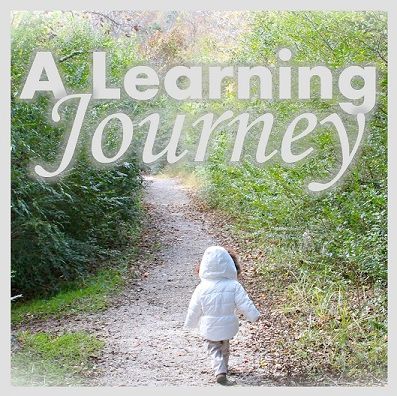






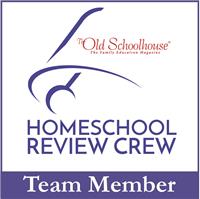
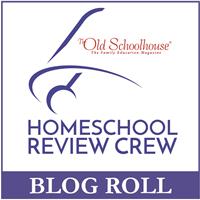





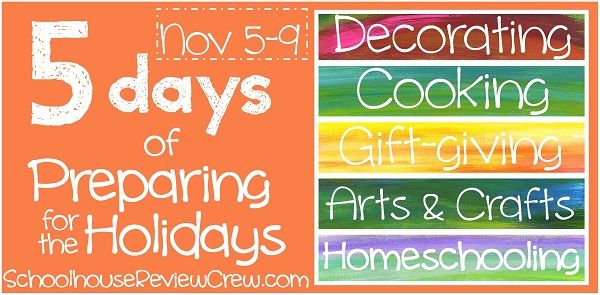
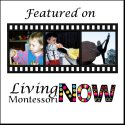


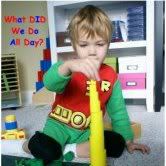



No comments:
Post a Comment